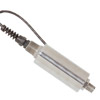How Are Engine Fuel Injection Systems Designed and Tested?
It’s well known that fuel injection technology has changed the automotive industry, and helped make cars a lot faster. Fuel injection makes combustion engines cleaner and more efficient, too.
But it is less well known just how these very precise, micro-machined systems work – or how engineers test them.
In this article, we will take a look at modern fuel injection systems and some testing equipment choices.

What is fuel injection?
Traditional petrol engines used carburettors to deliver fuel to their pistons. The carburettor’s other important job was to blend the fuel with air at the correct ratio for combustion.
However, carburettor technology is now rather archaic. The first carburettor was invented all the way back in 1826. A newer, better system was always likely to supersede the carburettor at some point. And that new system was fuel injection technology, which began to replace carburettors in cars in the 1980s.
Emissions are also reduced, as the concentration of harmful particles is lower.
From mechanical to electronic fuel injection
The first fuel injection systems were mechanical. But, like with many other technologies, electronics have since been added to provide greater control.
The microprocessors in today’s fuel injection systems control the pressure of the injected fuel, based on how much pressure is applied to the accelerator pedal.
The control system works like this:
- A pressure transducer in the engine sends continuous feedback data to the microprocessor about the pressure of injected fuel
- The microprocessor uses this pressure data (and other data such as speed, load and other internal calibrations) in a programmed algorithm to calculate pressure requirements for injected fuel
- Fuel is injected at the correct pressure based on how hard the pedal is pressed, and the control data described above
The pressure transducer’s continuous feedback loop allows the microprocessor to adjust the fuel injection almost instantly and with great precision.
Testing engine pressure transducers
Modern engines’ therefore need precise pressure control systems, which must be carefully tested.
The devices used to test engines are also themselves pressure transducers – albeit ones designed for testing, rather than fuel injection system feedback.
OMEGA Engineering’s high-accuracy piezoresistive pressure transducers have been used in commercial and aerospace applications for over 25 years. Our current PXM409 range is made from micro-machined stainless steel and offers a wide range of specialised versions for sealed gauge, compound gauge, absolute, vacuum and barometric pressure ranges.
Read more about
OMEGA High Accuracy (0.08%) Pressure Transducers
If you have a specialist application or would like to discuss your requirements with an expert, you can also talk to our technical team.
Contact us today.
pressure transducer | Related Products
 CLOSE
CLOSE







